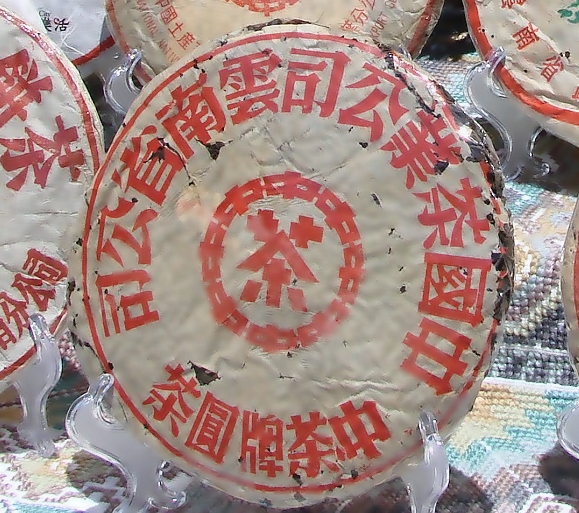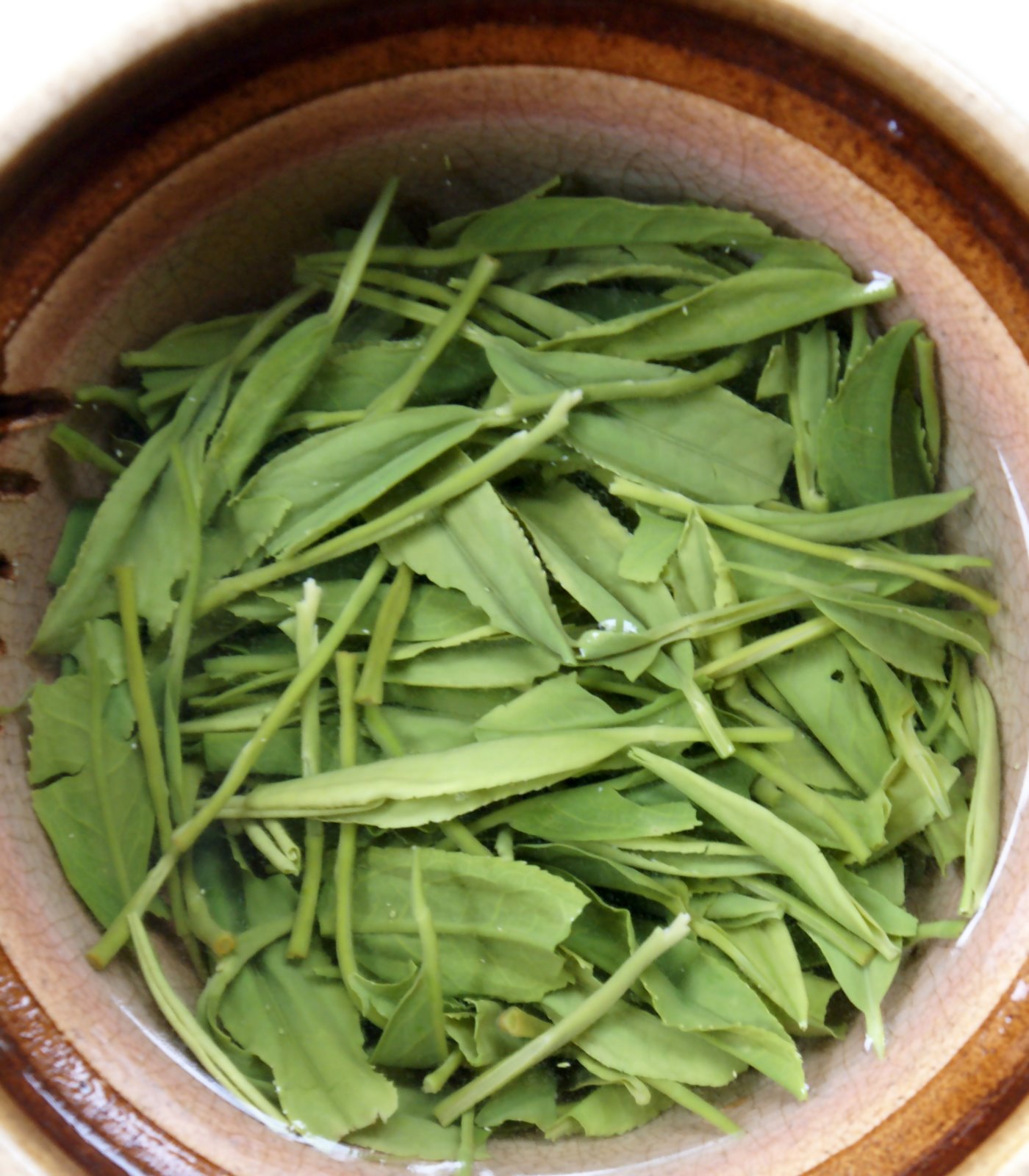Wine and tea (3)
Posted on 4 August 2011
In Part 1 and 2 of this article, I explored the unexpected similarities between wine tea in where and how they are grown, and their production process. It’s time to discuss the most important thing: how we consume wine and tea.
7. Health effects. Both wine and tea are mild drugs. As such, they have a psychoactive effect, and have for millennia been used as a stimulant and intoxicant. There’s actually more than a bit of similarity in the religious aspect of wine consumption in Ancient Greece and Rome, and tea drinking in Buddhist China, and later Korea and Japan. Buddhist monks developed tea to help enter a meditative state. The mild intoxication offered by wine was valued as a means of entering the irrational realm of Greek divinities, but excess in drinking was considered a sacrilege (hence Ancient Greeks mixed wine with water).

Many of the many health benefits of tea derive from theine (which is the same as caffeine).
The psychoactive properties of wine as an alcoholic drink are well-known to any drinker. In small quantity, wine acts as a stimulant, removing inhibition and sharpening both the senses and the mind. With tea, the physical effect is subtler and more difficult to assess. Theine is a stimulant, but it’s present in brewed tea in varying proportions: green tea that makes up a large proportion of the daily consumption in traditional tea drinking countries such as China or Japan contains little theine, and so its effect is mild. But there is another level to it. Tea acts on the mind but also on the body, conveying a strong energy that is called qi. Qi depends on the type of tea, and how it is brewed. A very concentrated Japanese green sencha, with its strong umami flavour, will actually release a lot of qi. Other teas strong on qi include young puer and some oolong teas. (See here for a brief and here for a lengthy discussion of this elusive notion).
Intoxication from excessive consumption of wine is an obvious phenomen. Can tea have a similar effect? Casual drinkers would say no, but tea lovers are familiar with the phenomenon of being ‘tea drunk’: symptoms such as sweating, higher pressure resulting in sleep difficulties, and mild hyperacitivity typically follow an extended tea session when you imbibe a liter or more of quality leaf tea.
As mild plant-derived drugs wine and tea have positive health effects (in both cases mostly due to the presence of antioxidants) that have been well explored.
8. Culture. Tea and wine are strongly embedded in culture. As the preferred drinks of two great ancient civilisations: China and the Judeo-Christian Mediterranean, they have accompanied mankind for three thousand years, and a complex web of cultural practices related to tea and wine was developed. In Europe, wine acquired a religious meaning when it was integrated into Christian liturgy. Toutes proportions gardées, the Japanese tea ceremony, with its set of formalised gestures, is as much an aesthetic and religious phenomenon, similarly to wine in Europe. Tea has been used as a currency in Asia while vineyards and wine stocks became the source of wealth for a number of European regions, from Burgundy to Bordeaux, Champagne, and the port and sherry countries.

Wine appreciation as we practice it was born in the 18th century. © Château Margaux.
Tea and wine are inseparable from the daily life of Asian and European societies. The day of a Chinese or Japanese will start with brewing a cup of tea, similarly to European workers taking a glass of wine with their morning sandwiches (I still remembers lads at the bar with a coup de rouge when I grew up in France in the early 1980s, although that practice now perhaps belongs to the past). It’s as unthinkable for a Chinese eatery to do without tea as it is for a European restaurant to serve no wine with meals. Wine and food matching has developed into something of a codified science over the nineteenth and twentieth centuries; Asia doesn’t go as far with tea, but the possibilities of matching tea with both traditional and modern foods is immense (on this blog I explored themes such as fruit, fish and chocolate).
9. Investment. One interesting analogy is how wine and, to a lesser extent, tea have evolved into collectible items of high monetary value. For centuries, they have been staples that remained largely affordable, and even the prestigious ‘tribute teas,’ and royal, imperial and papal wines derived their value from their rarity and exclusiveness more than anything else. When their consumption was democratised in the 20th century, prices even of the best teas and wines remained within reach of the average middle class consumer. My father could purchase 70 bottles of Château Margaux for his modest monthly wage when working in Paris in the 1970s; my figure today is closer to 2 or 3 bottles. Since the late 1980s the prices of collectible Bordeaux (and a few others wines from California, Italy and Spain) have gone through the roof, increasing by something like 1000%. The increase just between 2005 and 2010 for many châteaux is between 50 and 100%. The en primeur market has largely grown into one of investors, hedging funds, and speculators. There has been talk about this bubble bursting ever since I can remember, but that has never happened, and I think it will not. (There have been isolated cases of unsuccessful years, such as 1997, but even over the short-to-medium term the prices go up continuously). Supply remains limited while demand steadily increases, and those traditional consumers that jump off the train are replaced by new consumers e.g. from BRIC markets. The inflow of cash into the system keeps increasing.
China has largely experienced the same evolution on the puer tea market. Once a rock-bottom staple used for its medicinal properties, and reputed for its ageability, it has become a prestigious medium of middle-class self-appreciation. There’s a mixture of the rational (puer is tasty; it’s handy to buy and store; it’s easily available and affordable), irrational (there’s a lot of speculation, dishonest vendors, counterfeit teas, and unjustified price increase) and magical (those reputed medicinal properties, as well as luck-bringing cuvées all full of 8s in their names) to the puer hype in China, but the fact remains it’s a quickly expanding market. Exactly as with the Bordeaux wine market, there’s a split (becoming an abyss) between the everyday affordable puer (from large companies such as Menghai or Xiaguan, which you can buy in millions of places on the internet) and the handful speculative brands such as Xizihao, Chen Guang-He Tang or Yanchinghao.
A 357-gram cake of Xizihao tea originally cost $15 in 2006; when I bought this tea in 2009 it cost me $30; the latest vintages, 2009 and 2010, were offered at between $60 and $150. One of the major traders of puer in the Western world, Houde, recently offered customers to buy back 2005 XZH for $225 apiece.

This 1950s tea costs $35 per gram. That’s the equivalent of a $26,000 bottle of wine. When released, it probably cost as little as a newspaper. © Houde.
There’s talk about the puer bubble bursting, too. There has been a slowdown in early 2009, but prices quickly recovered. It would be better for the average tea drinker if the puer market became more realistic, but looking at the history of Bordeaux, and given China’s growing economy (meaning money inflow into the system is still on the up), that’s unlikely to happen.
10. Criticism. There is one major difference between and wine and tea: it’s the culture of criticism that has evolved around the two. Although more people drink tea than wine worldwide, there is relatively little tea writing. I’m not talking about the classical writings of China or Japan, but currently there are very few printed publications related to tea drinking and enjoyment (The Leaf and The Art of Tea are notable exceptions). There surely is a lively blogosphere including very well-written and in-depth blogs such as Tea Masters, The Half-Dipper, Mattcha’s Blog, and many excellent tea blogs in French as well, but it is all very little compared to wine. There are hundreds of wine magazines in the world including three in Poland (where there’s not a single specialist tea blog). I’m not even trying to keep count of the blogs, but in Poland alone, still a relatively small market, there are around 50 wine blogs at the moment. Tea has the lively Teachat forum as well as the Steepster tasting notes community but they’re a far cry from places like Cellartracker or the Wine Lovers’ forum.
Yet quantity is not all. As a wine writer and reader I’m concerned about the quality of some wine discussions. Wine seems to inflate the ego, and the amount of flaming, trolling and spamming that is going on some wine websites is second only to what’s happening around politics. From that point of view, tea writing seems to unravel all the positive qualities of the human being. There is a lot more openness and magnanimity in the tea community. Perhaps it is a little of the Zen filtering even onto the most technical of tea appreciators.
Although wine criticism has developed an extremely rich descriptive language that often seems strikingly precise to those who write about tea, it also has a tendency to degenerate. One wine taster (who’s never been particularly prone to hyperbole) recently described a German sweet wine as:
Sugar-coated kumquats, jammy apricots, honeyed tea, and tangerines are found in its medium-bodied, lush personality. This wine possesses sumptuous depth as well as a long spice and caramelized peach-flavored finish.
The communicative potential of this tasting note is limited; it becomes a literary exercise of a powerful ego. It’s hard to imagine the same Baroque language being used for tea. Tea induced simplicity, humbleness, and conviviality: characteristics that many wine writers would benefit from adopting. Yet very few seem to show any interest in tea. I can remember Andrew Jefford writing these fascinating lines, as well as Jancis Robinson, Hugh Johnson and Jasper Morris. (My list is surely far from exclusive). French or Italian authors, on the other hand, couldn’t be bothered. Tea tasting is something every wine taster should do from time to time. It really enhances your comprehension of wine, too.





